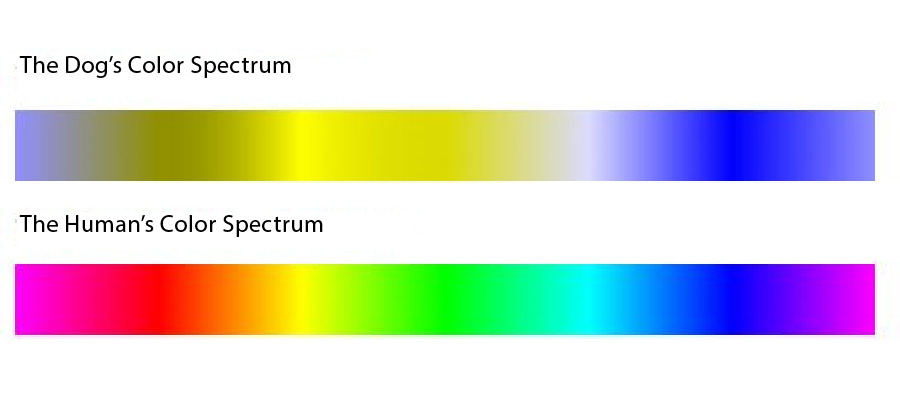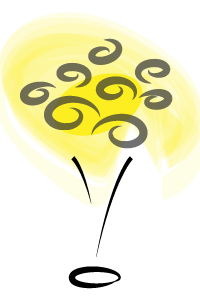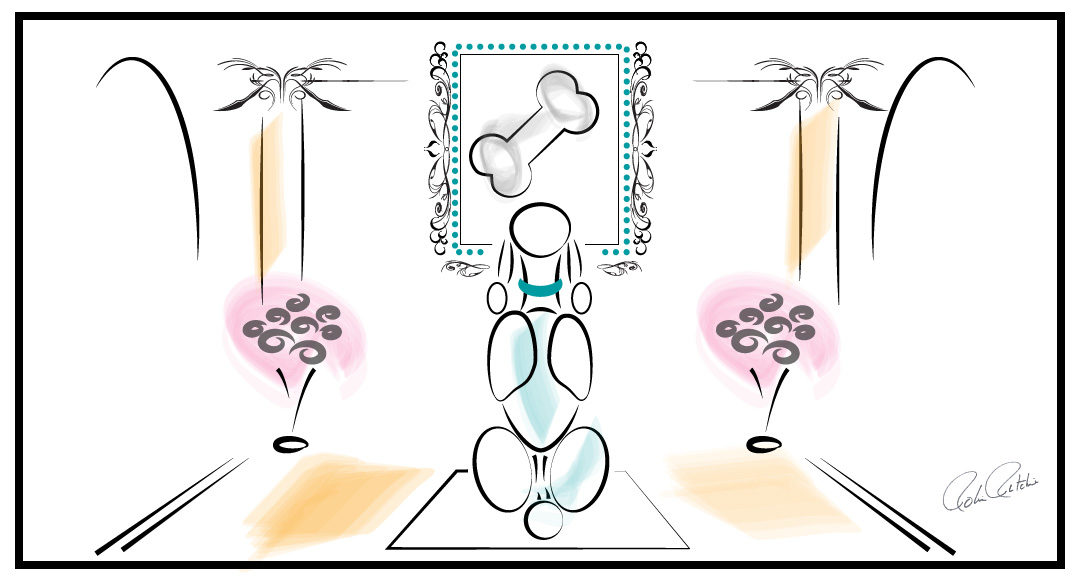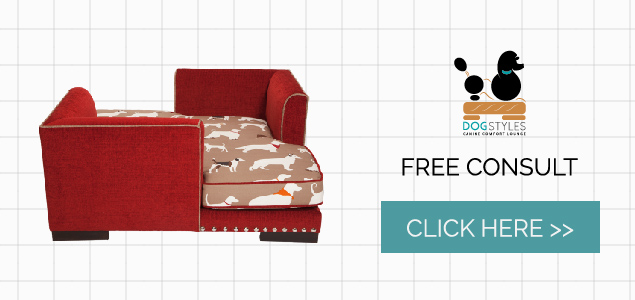Illustration by Robin Ritchie

As an interior designer, my life is all about color, texture, and patterns. And, when I take on a design project the first thing that I do is interview a client to get a feel for the style that fits their lifestyle and taste.
Last year, when I launched DOGSTYLES Canine Comfort Lounge, the question came to mind about colors that not only accent the style of the human world but also provide a calming and comforting feeling for our fur babies.
Dogs Seeing Color
Until 1989, it was thought that dogs saw the world as either black or white with shades of gray in between. It was at that time when researchers at the University of California at Santa Barbara examined the color vision of three dogs and made an interesting discovery.
Color vision is possible due to specialized types of photoreceptor cells in the retina called cones. When these cells are stimulated, they transmit a signal to the brain, which is perceived as a particular color.
Dogs, like most mammals, are dichromats—possessing two types of cones in their retina for color perception and ability to see details. Humans, on the other hand, are trichromatic. Their eyes contain three types of light-sensitive cones—blue, green, and red—which allows for all colors in the visible spectrum to be seen.

As you can see, from the color spectrum bars, dog’s cannot actually see the colors of red or green and pastels blend into white or shades of blue. This vision is nearly identical to the four percent of the human population that suffer from red-green color blindness.
So if you are at the park on a bright sunny day, throwing a yellow tennis ball into the green grass, the difference between the two shades may make it harder for your dog to see. However, the contrast between a red, orange or blue ball against what we see as green grass, can easily be seen against what dogs perceive as a yellow field.

So, the big question is, do dogs favor one color over another and do those colors have a calming effect on their system.
In 1995, R.C. Newberry published the results of a study conducted at the Coyote Point SPCA whereby healthy, mixed breed dogs, ten males, and ten females, between six months to seven years of age, were used to determine if they had a preference for chew toys based on color. During the experiment, the same toys with differing colors of red, green, yellow, and blue were presented to the dogs for 60 minutes a day for a period of three weeks.
The results of the experiment showed that the dogs had more interactions with the blue (147 male and 151 female), and red (120 male and 126 female), toys over the green and yellow toys which averaged about 24 interactions for both genders. Also, the dogs played longer with the blue toys (about 28 minutes each day) compared to the 5 to 10-minutes spent with the yellow and green toys. Playtime with the red toys was higher than the green and yellow but significantly lower than the blue at 17 minutes on average.



It is obvious from the 1995 study that dogs are stimulated by the colors blue and red. But, there has not been any documented research on which colors have a calming effect on a dog.
However, based on the stimulation study, I believe that it could be assumed a hint of playful red and blue colors, will attract your canine fur baby to their new bed and our beds with the surrounding dominant earth tones will relax them as if they were curled up in the warm grass.
Diane Cabral
Owner, Interior Designer
As the principal , and lead designer of Diane Cabral Interiors, Inc., I have owned my own design firm since 1998 and design both residential and commercial projects. I love designing for my clients, and believe design also includes a special place for a beloved pet.
, and lead designer of Diane Cabral Interiors, Inc., I have owned my own design firm since 1998 and design both residential and commercial projects. I love designing for my clients, and believe design also includes a special place for a beloved pet.


